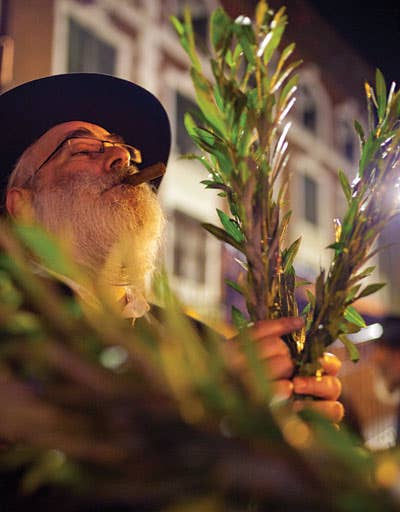
Harvest Ritual
The holiday of Sukkot is named for the sukkah, the booth that is central to this week-long festival. The structure pays homage to the temporary dwellings that Biblical Jews built during their years of wanderings after the exodus from Egypt. Sukkot is also a harvest holiday, and the hut resembles the shelters that farmers built in the fields during periods of round-the-clock work. When constructing a sukkah, Jewish law requires the following: The structure must have at least three walls; it must be large enough to fit a table; the roof must be made from organic materials that have been cut away from the earth; and the roof must have openings that reveal the stars, which symbolizes, among other things, people's dependence upon God. For the week, the sukkah becomes a home away from home—all meals are eaten there, and people are encouraged to sleep there as well. A sukkah can be large or small, lavish or humble. The materials used vary: Bukharian Jews from Central Asia have long used fabrics for the walls and willow for the roof; in the United States, it's common to see huts made with plywood and tarp, decorated with produce, plastic or real. In Israel, restaurants build sukkot (plural for sukkah) so customers can dine out during the holiday. There are other efforts to update the sukkah. Last year in New York City, Sukkah City, a design competition, invited architects to reimagine the structure. The winner was a sphere made from marsh grass, plywood, and twine.
Keep Reading
Continue to Next Story










